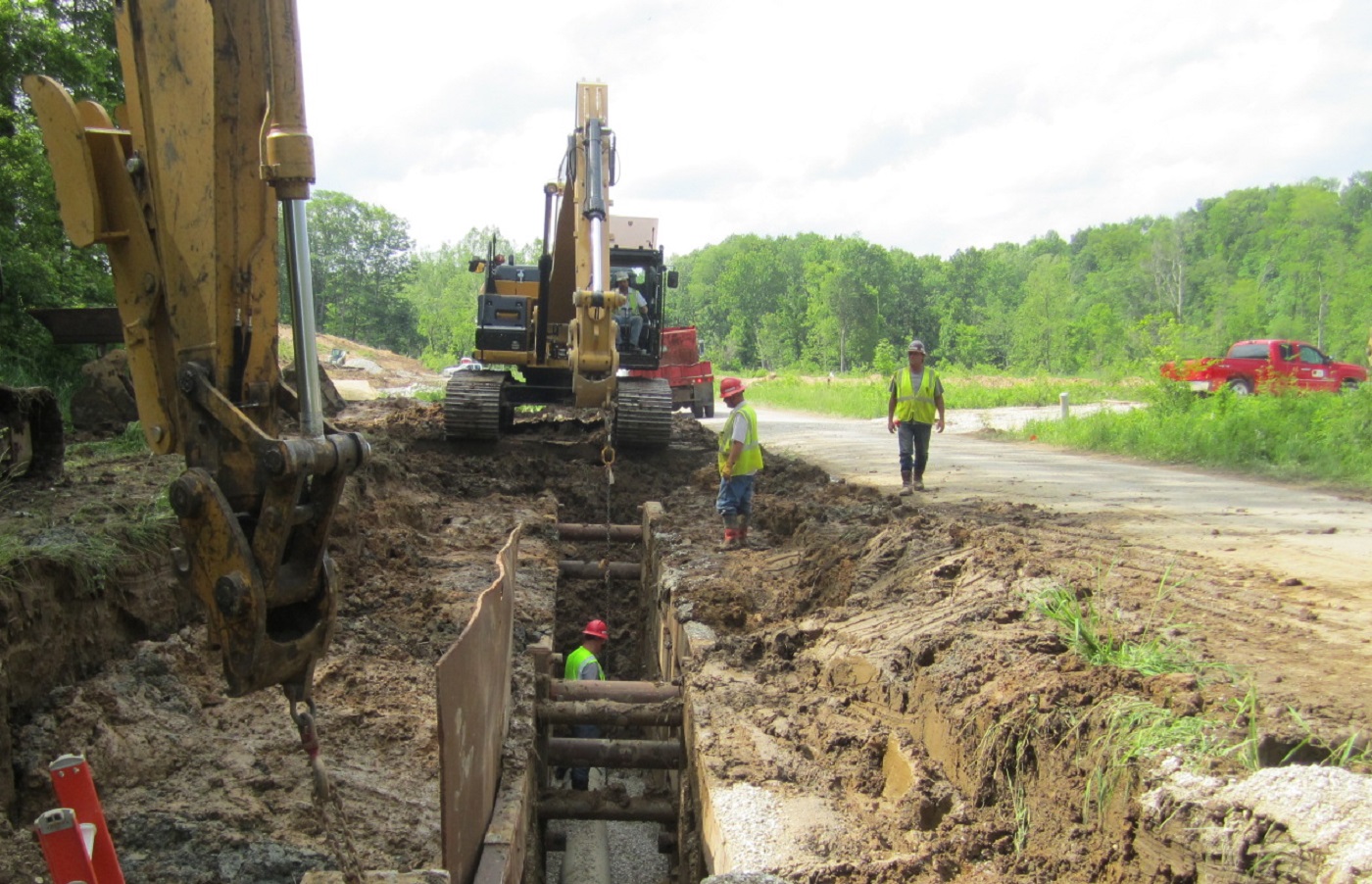With the water distribution system conflicting with the route of the new Interstate 69 (I-69) corridor in Greene and Monroe Counties, 47,000 linear feet (LF) of water main had to be relocated, modified and/or abandoned prior to the construction of the interstate. Wessler assisted Eastern Heights Utilities (EHU) with water main relocations at 19 locations. Wessler’s services included design, survey, permitting, construction administration, and inspection during the interstate construction by five different Indiana Department of Transportation (INDOT) contractors.
The water mains were the first utility relocated in all but two locations, with the Wessler team accelerating work schedules with limited notice, sometimes by as much as three months. The fast tracking of schedules provided significant benefit to INDOT, the I-69 project construction schedule and EHU.
Wessler also studied each project area for possible environmental impacts and planned appropriately to avoid, minimize and then mitigate unavoidable impacts. Permits for waterway crossings, wetland impacts, construction in a floodway and erosion and sediment control were obtained prior to the beginning of each project. Early coordination was completed and permits were obtained from the following agencies: IDEM (401 Water Quality Certification and Rule 5), US Army Corps of Engineers (404 Permit for waterway/wetland impacts) and DNR (construction in a floodway). The project design had to also account for wellhead protection areas, underground karst features and restricted tree-cutting periods to prevent adverse impacts to threatened and endangered species such as the Indiana Bat and the Bald Eagle.
Approximately 12,000 LF of land clearing was conducted within the existing I-69 right-of-way and/or 20-foot wide easements along the route of the planned water main relocations. Land clearing included complete removal of trees and stumps, erosion control measures, and temporary site stabilization. In order to avoid impacts to the roosting habitat of the Indiana Bat, it was necessary to schedule the tree clearing between November 16 and April 1.
During construction, Wessler completed regulatory inspections to ensure that permit conditions were implemented as planned and provided coordination with appropriate regulatory agencies to close out permits as the projects were completed.
Read More


